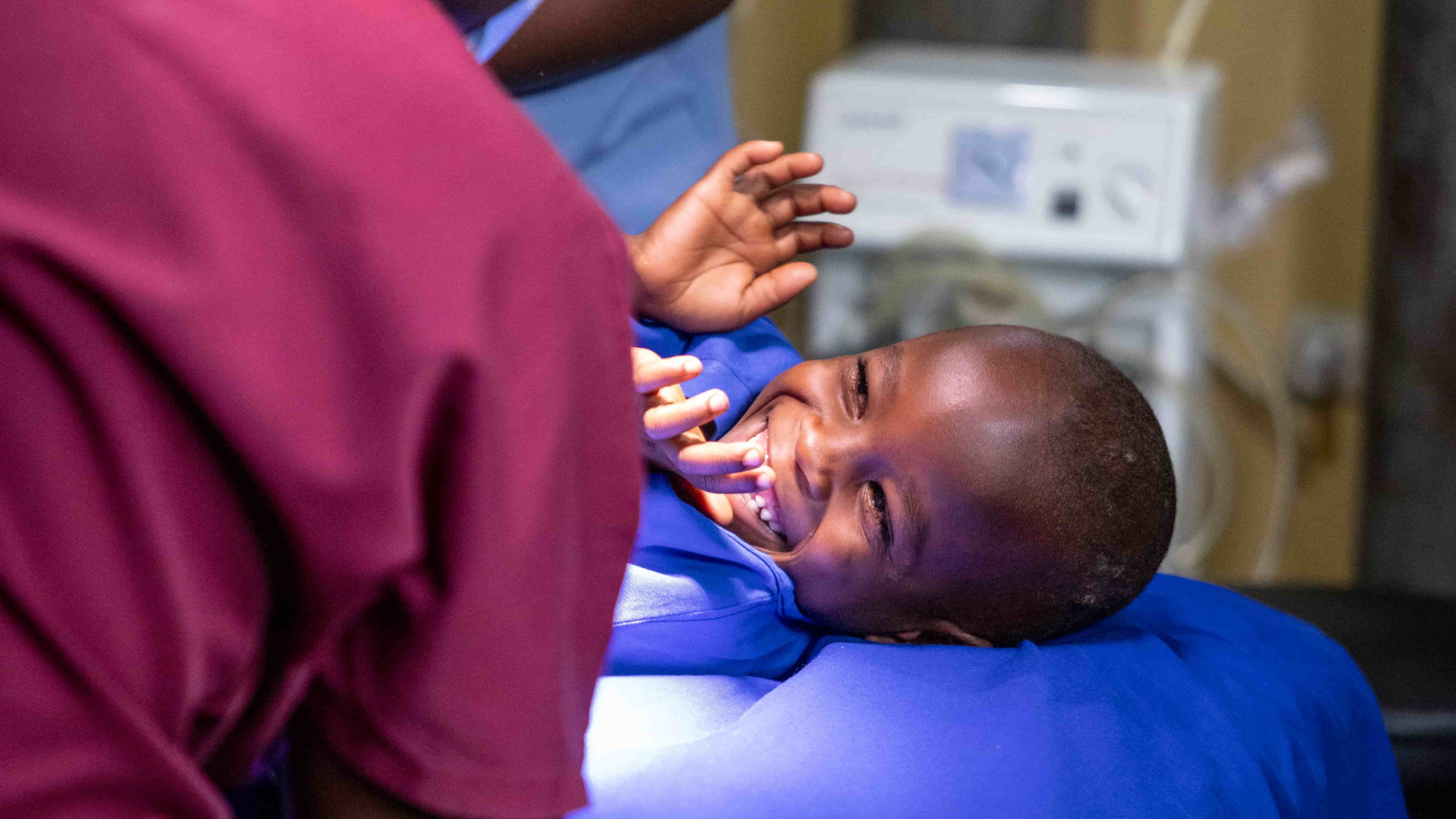The eye doctor helping communities see again in Laos
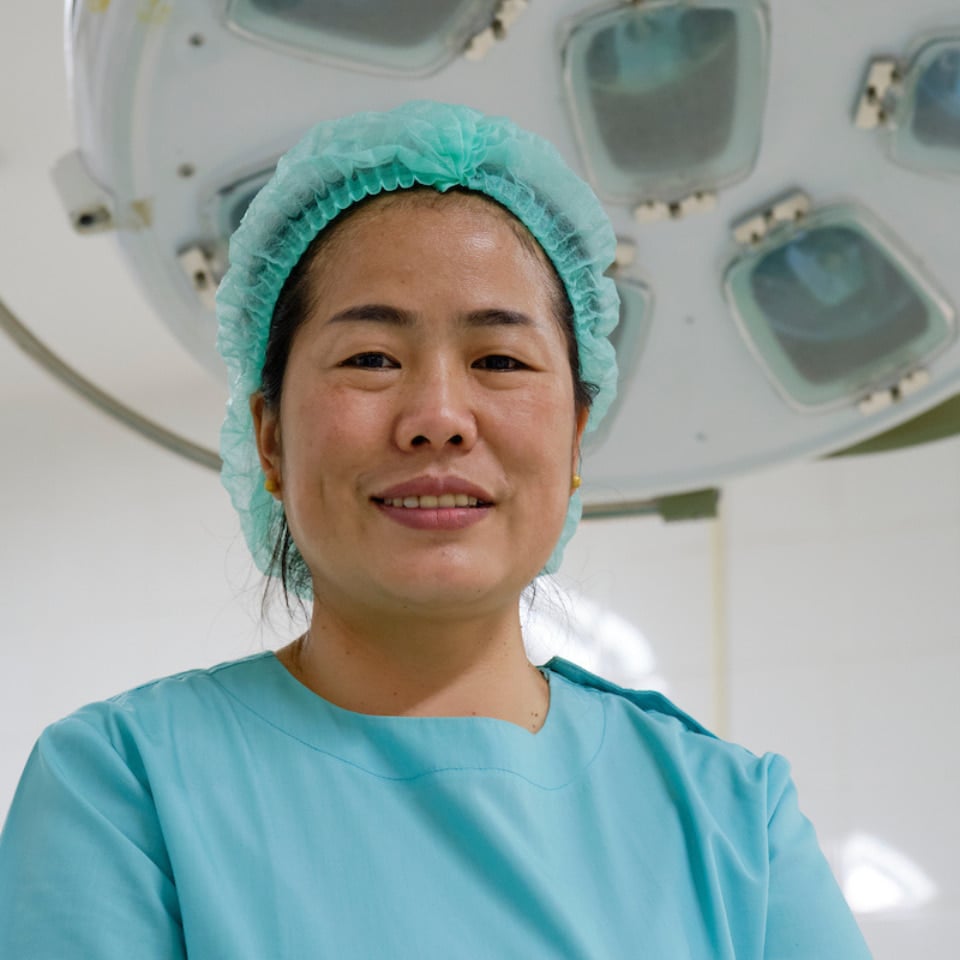
In the mountainous province of Oudomxay in northern Laos, life can be especially challenging for people living far from hospitals. Simple daily tasks become difficult for anyone who cannot see, and for older people, cataracts often steal their independence. Cataracts alone are the leading cause of blindness, responsible for 75 per cent of cases in people over 50. Each year, more than 6,000 people develop cataract blindness, yet access to eye health services remains low, and women are disproportionately affected.
Meet Dr Senglar Laosern: The eye doctor bringing hope to remote villages
In this challenging landscape, Dr Senglar Laosern has dedicated her life to restoring sight. Based at Oudomxay Eye Hospital, she travels for weeks at a time on mobile eye camps to reach patients in the most remote villages.
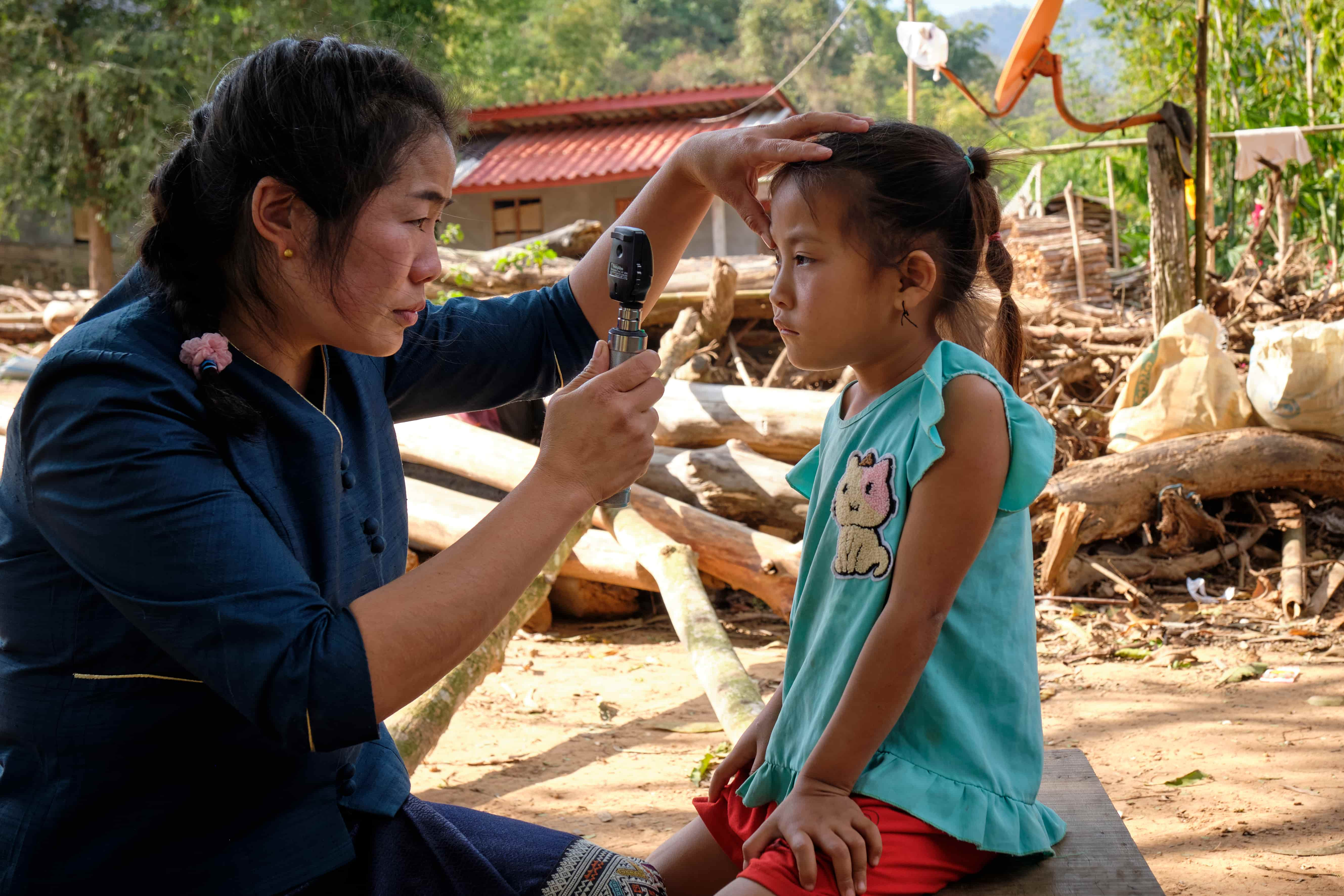
Dr Senglar examines six-year-old Chansouk’s eyes at her home in remote Oudomxay, northern Laos. Chansouk was diagnosed with a cataract in her right eye after Dr Senglar travelled to her village on a mobile eye camp.
Photo credit: Michael Amendolia
“Yes, majority of people in rural areas do not have access to a hospital. Many disadvantaged people are still waiting for us to reach them. When The Foundation provided us with the car, it helps us a lot to reach remote areas. When a patient is unwell, we can use this car to pick them up and bring them to a health centre. It is more convenient and we are able to help them, and help them all the way. We can get to them wherever they are,” she says.
A life changed by opportunity
Dr Senglar’s path to ophthalmology was unexpected. After completing medical school in 2009, she planned to specialise in obstetrics or pediatrics. A chance opportunity with The Fred Hollows Foundation changed her trajectory.
“The Fred Hollows Foundation provided me with a scholarship that I became an ophthalmologist today. All because of a sponsorship of The Foundation,” she reflects.
Since completing her residency in Thailand in 2016, Dr Senglar has helped hundreds of patients regain their vision.
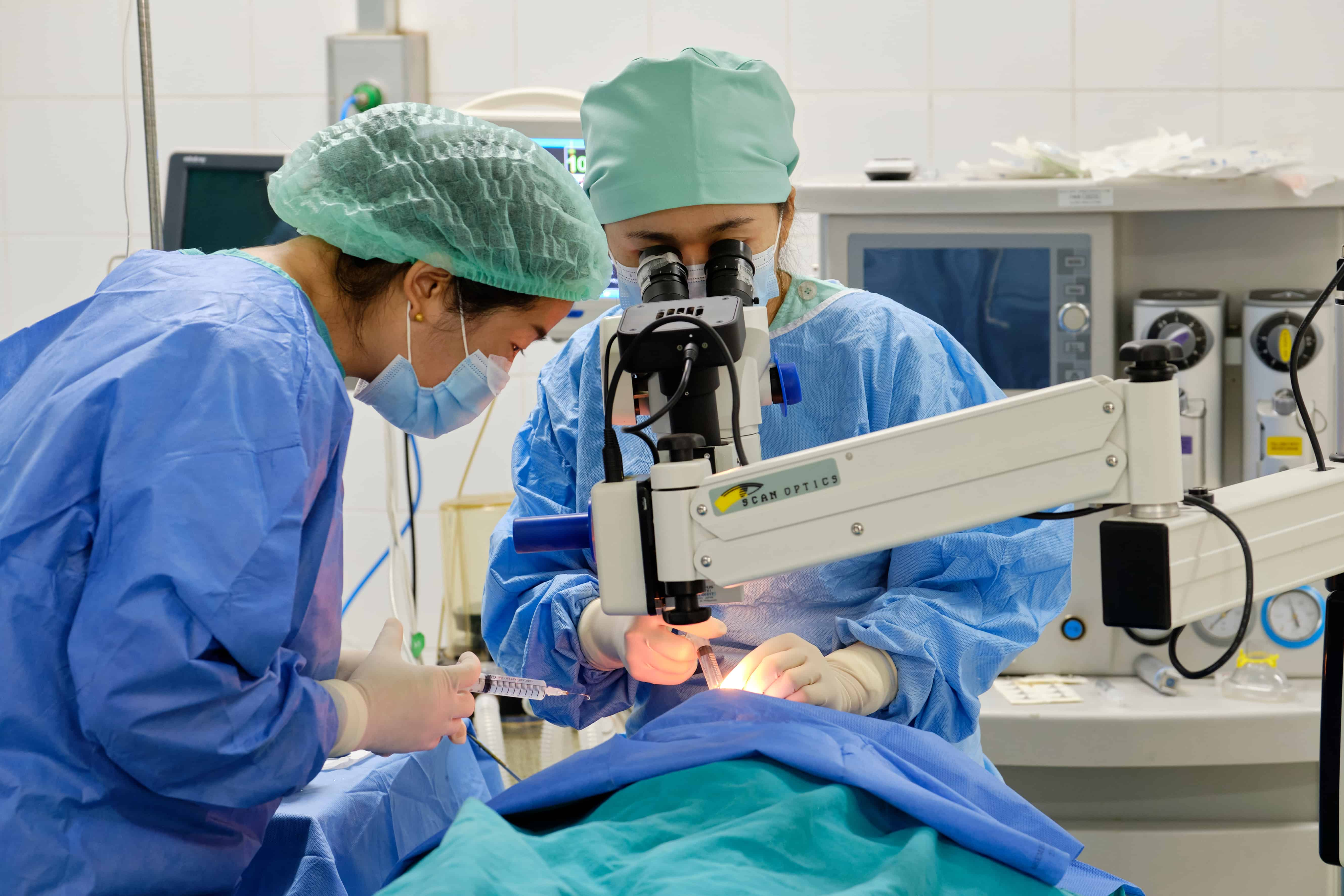
Dr Senglar and Dr Phatoumphone perform life-changing cataract surgery on six-year-old Chansouk at Oudomxay Eye Hospital in northern Laos.
Photo credit: Michael Amendolia
“If we can’t see, if we lose sight, it’s going to make our lives very difficult. If you are curious to know how inconvenient it is, you should try closing your eyes for 30 or 10 minutes, then walk in darkness like that. Or try living with a power outage for one night to see how we would struggle. And that’s how blind people live their lives. We are given an opportunity to help people see clearly like this, and I can’t put the right words to it, but I am very happy that I can help them like I do now. I am proud of what I can do.”
Breaking barriers for women in eye health
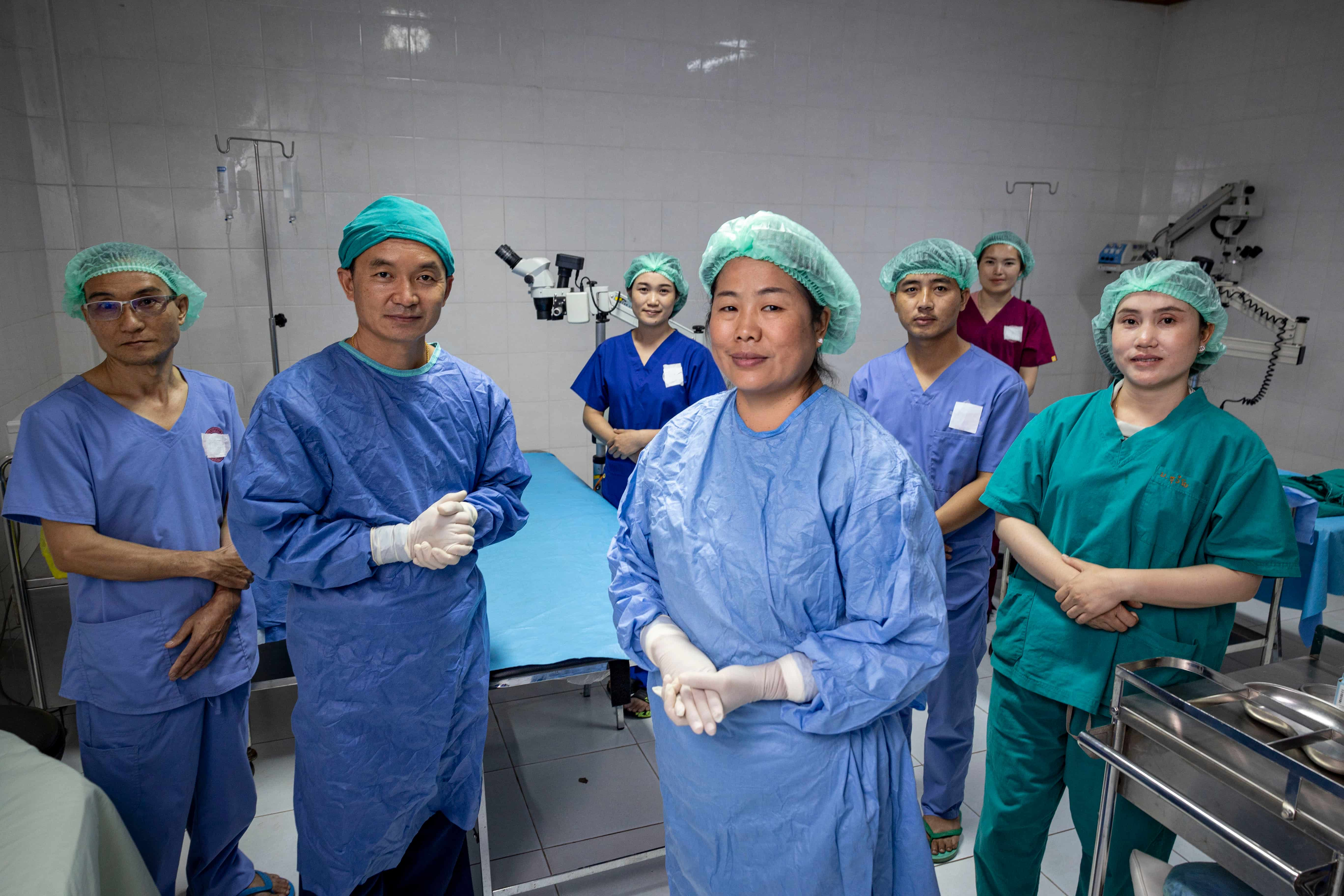
Dr Senglar Laosern and Dr Phetsamone Indara with their surgical team at Oudomxay Provincial Eye Hospital, where they perform sight-restoring cataract surgeries.
Photo credit: Michael Amendolia
The work is challenging, particularly for a female ophthalmologist in a country where there are only 34 ophthalmologists nationwide, and just 10 are women.
“Compared with other medical sectors, the number of staff in ophthalmology is not enough,” Dr Senglar explains. “Each province might only have 3 eye doctors to offer services. Therefore, we could say that we are lacking ophthalmologists.”
Despite these challenges, Dr Senglar is committed to expanding access to care, particularly for women and girls, who face greater barriers to treatment.
“I would like to convey my message to nurses who are about to graduate or newly graduated that if you still haven’t figured out what expertise you would like to have, I would like to encourage you to study ophthalmology to help our people, and to prevent them from turning blind.”
Transforming lives through sight
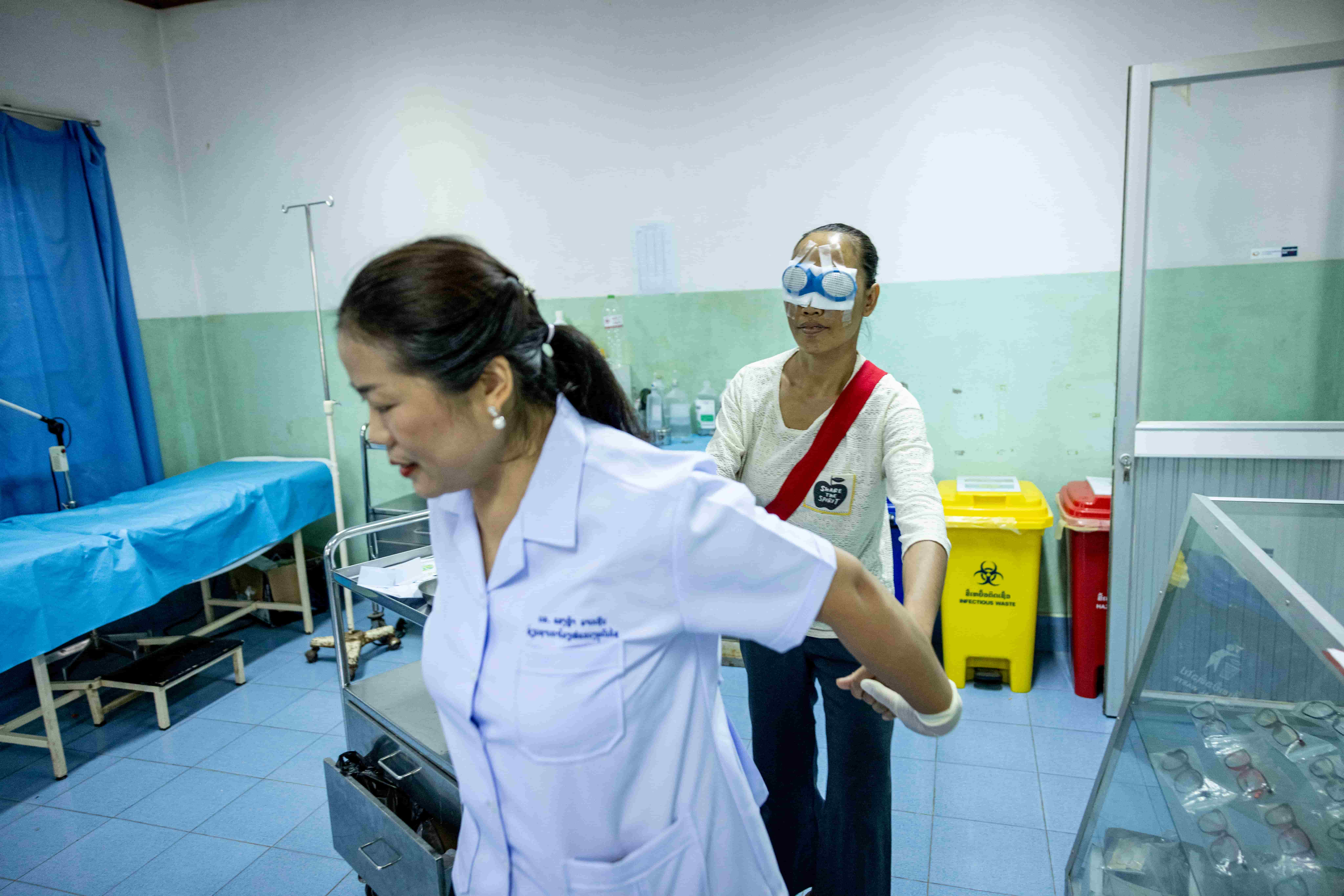
Dr Senglar leads Lien from the surgical ward after her cataract surgery, holding her hands as she adjusts to seeing again with her eyes still patched.
Photo credit: Michael Amendolia
The work of Dr Senglar, her team, and The Fred Hollows Foundation brings immediate and life-changing results for patients across northern Laos. In 2024 alone, The Fred Hollows Foundation supported the screening of 40,641 people in Laos, performing 3,458 cataract operations and distributing 7,236 pairs of glasses. For Dr Senglar and her team, these numbers represent real people whose lives have been transformed.
“No words can even describe the way I feel. There’s no other organisation that has helped us like The Fred Hollows Foundation. Thank you for giving me an opportunity to finish my study and become an eye doctor today.”
A vision for the future
Looking to the future, Dr Senglar is determined to continue her mission: “I will not stop just here; I will develop my skills to the highest potential. I would like to thank everyone who works for The Fred Hollows Foundation for your support. I pledge that my help as a doctor will not only stop here. I want [eye health services] to be universally accessible.”

Dr Senglar holds the hand of 78-year-old Yerng after her cataract surgery, helping her regain independence and vision at Oudomxay Eye Hospital.
Photo credit: Michael Amendolia
Her dedication is a testament to what is possible when training, support, and resources are combined with commitment. Through Dr Senglar’s work, thousands of people in northern Laos now see their families, work their fields, and live independently—a gift that changes everything.
Join us in restoring sight and hope across Laos. Donate today or become a Visionary to help end avoidable blindness worldwide.
Related articles

Taking eye care to potters in Bangladesh
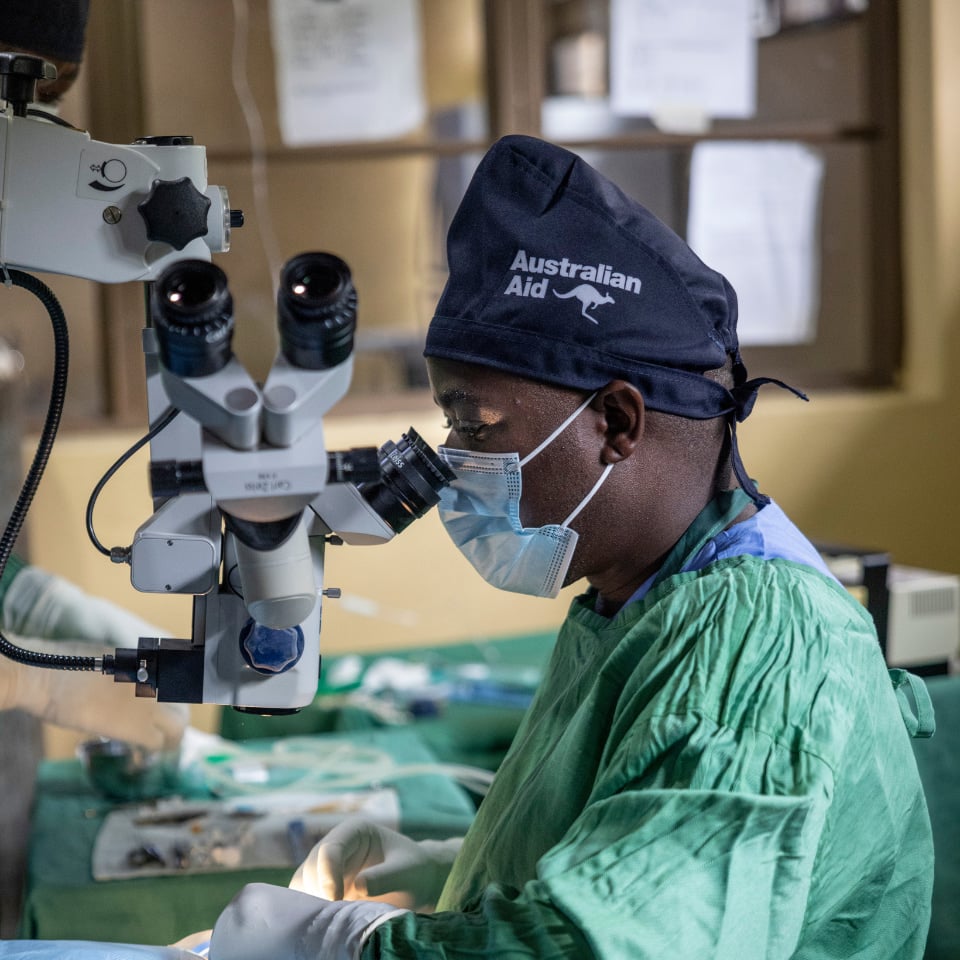
How we celebrated World Sight Day 2025: Promoting eye health around the globe
